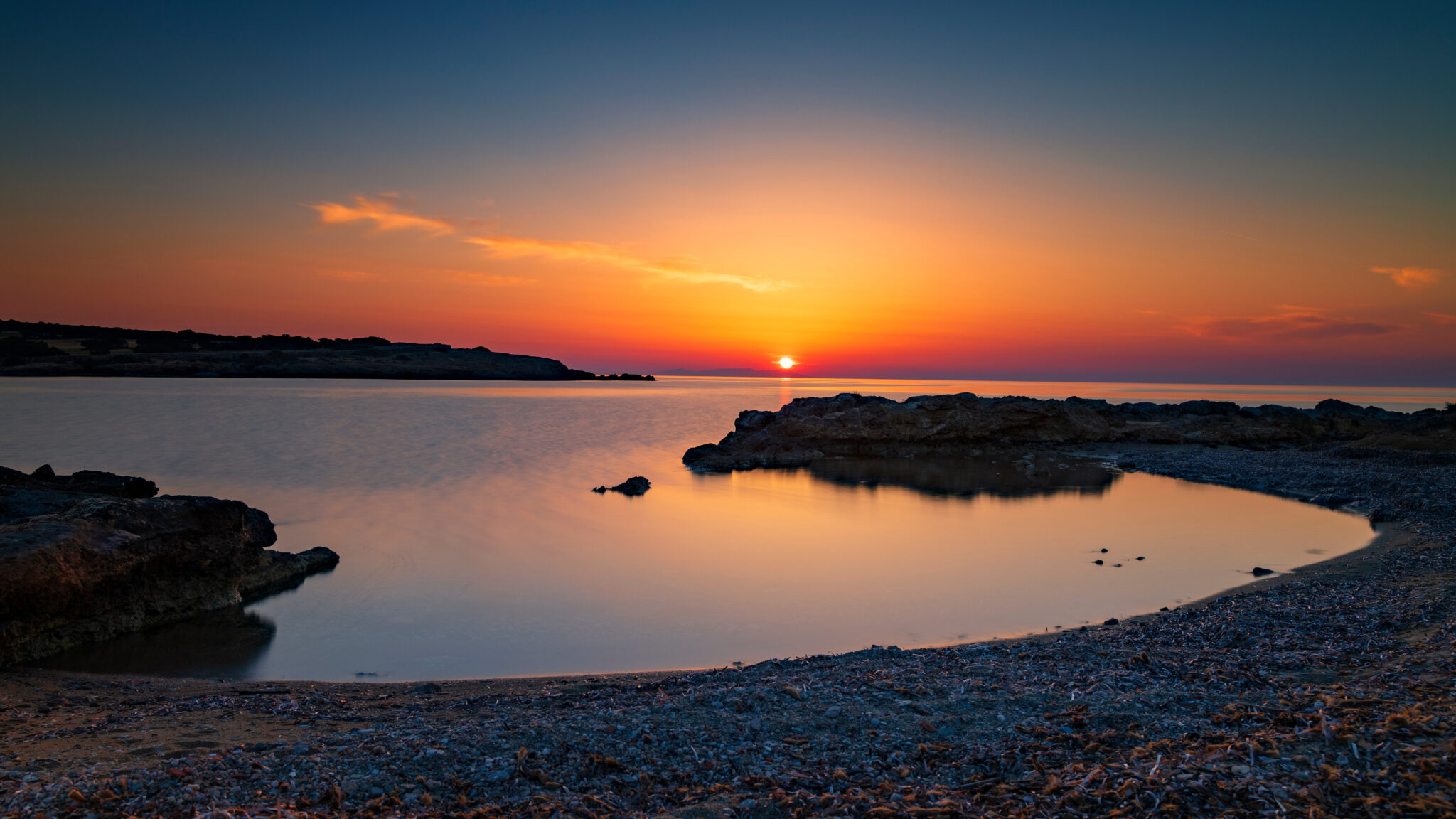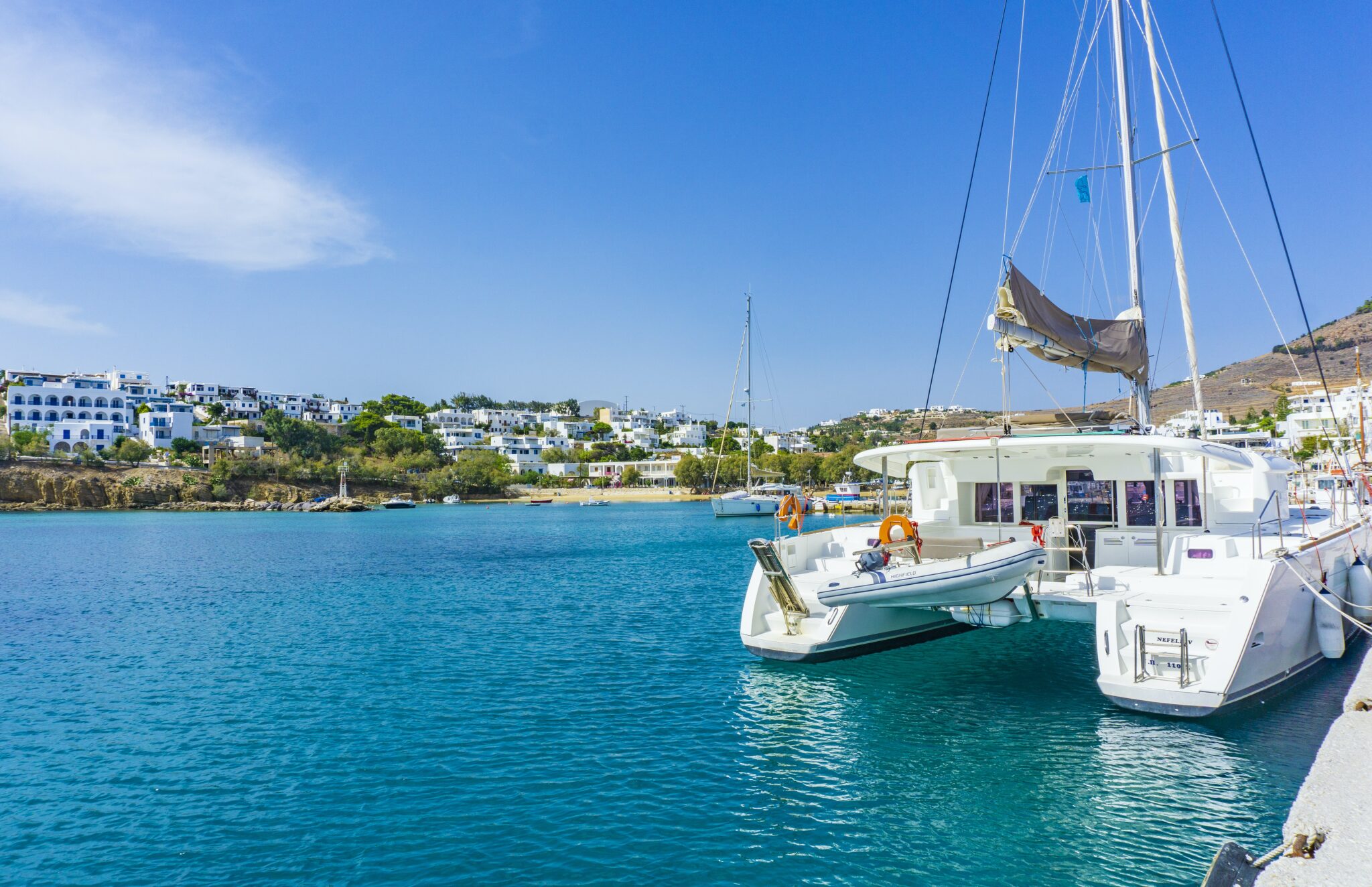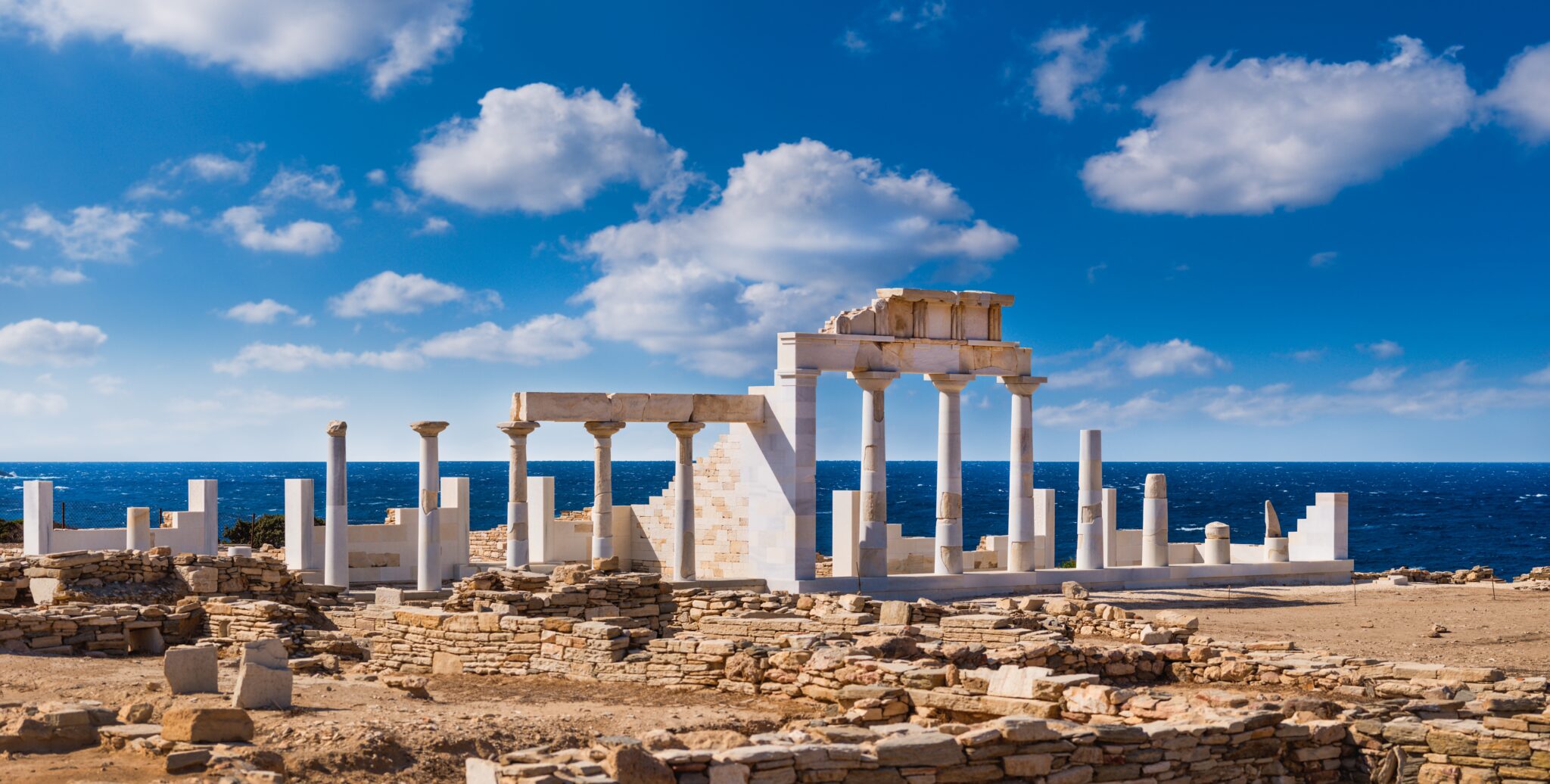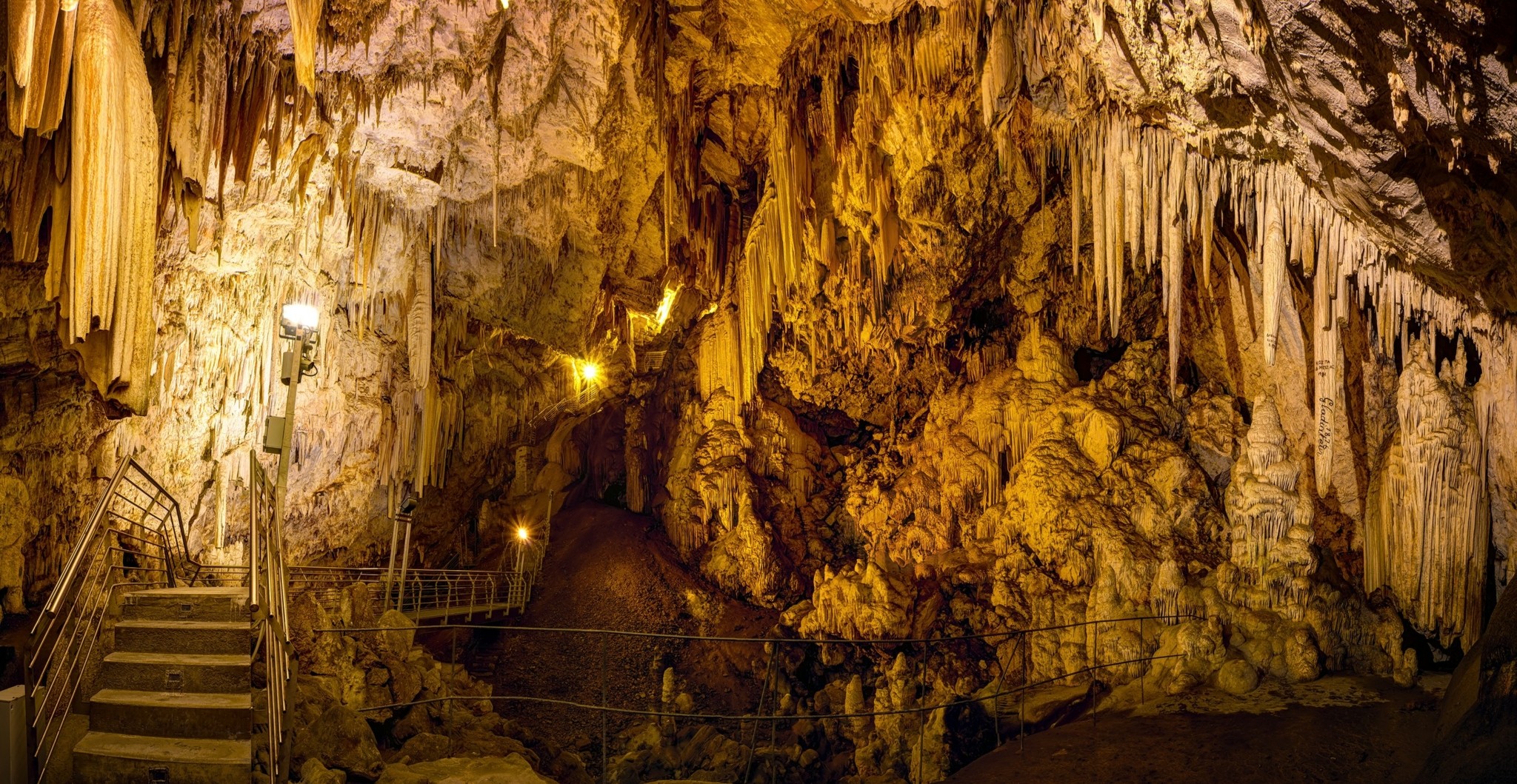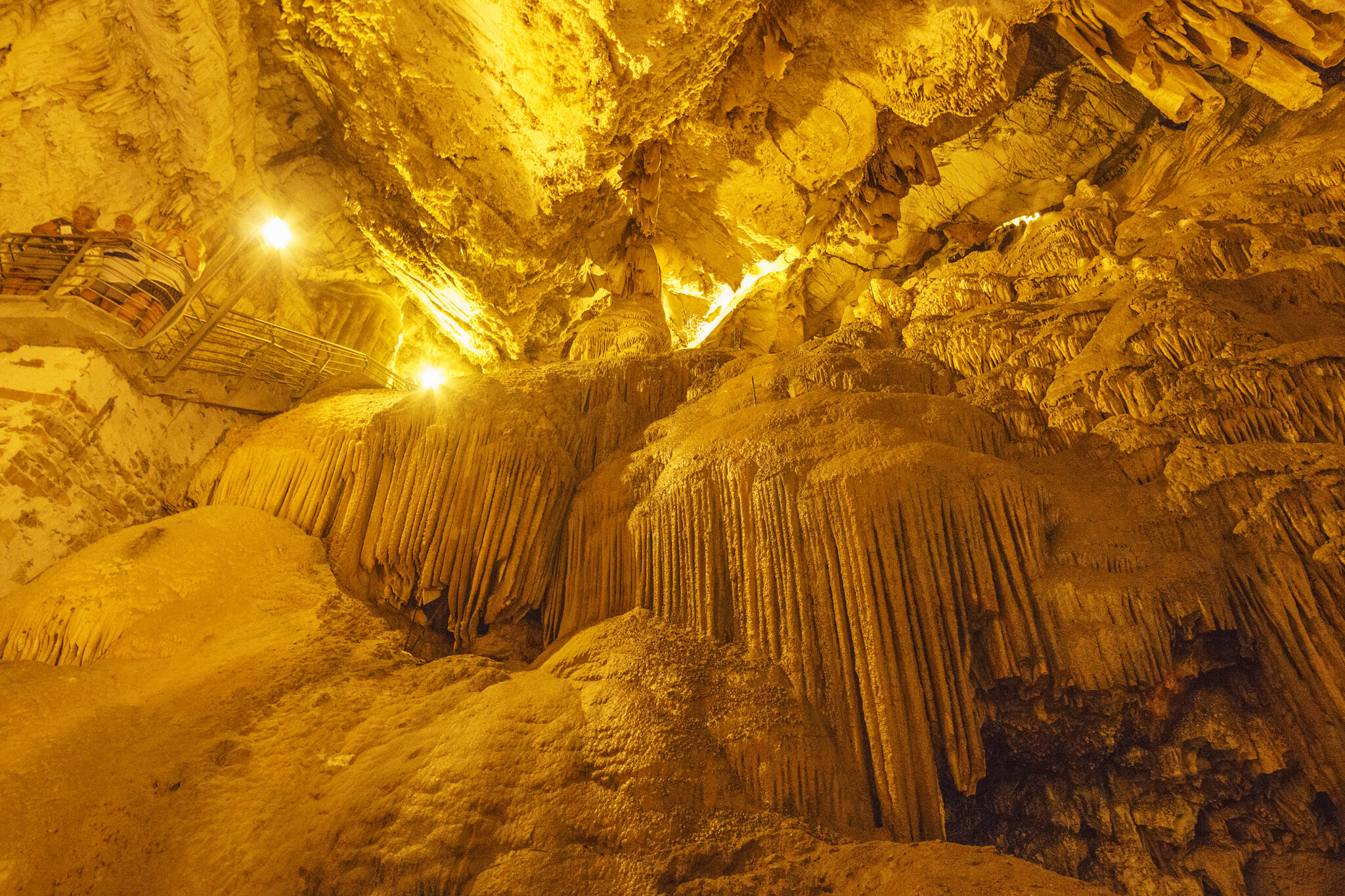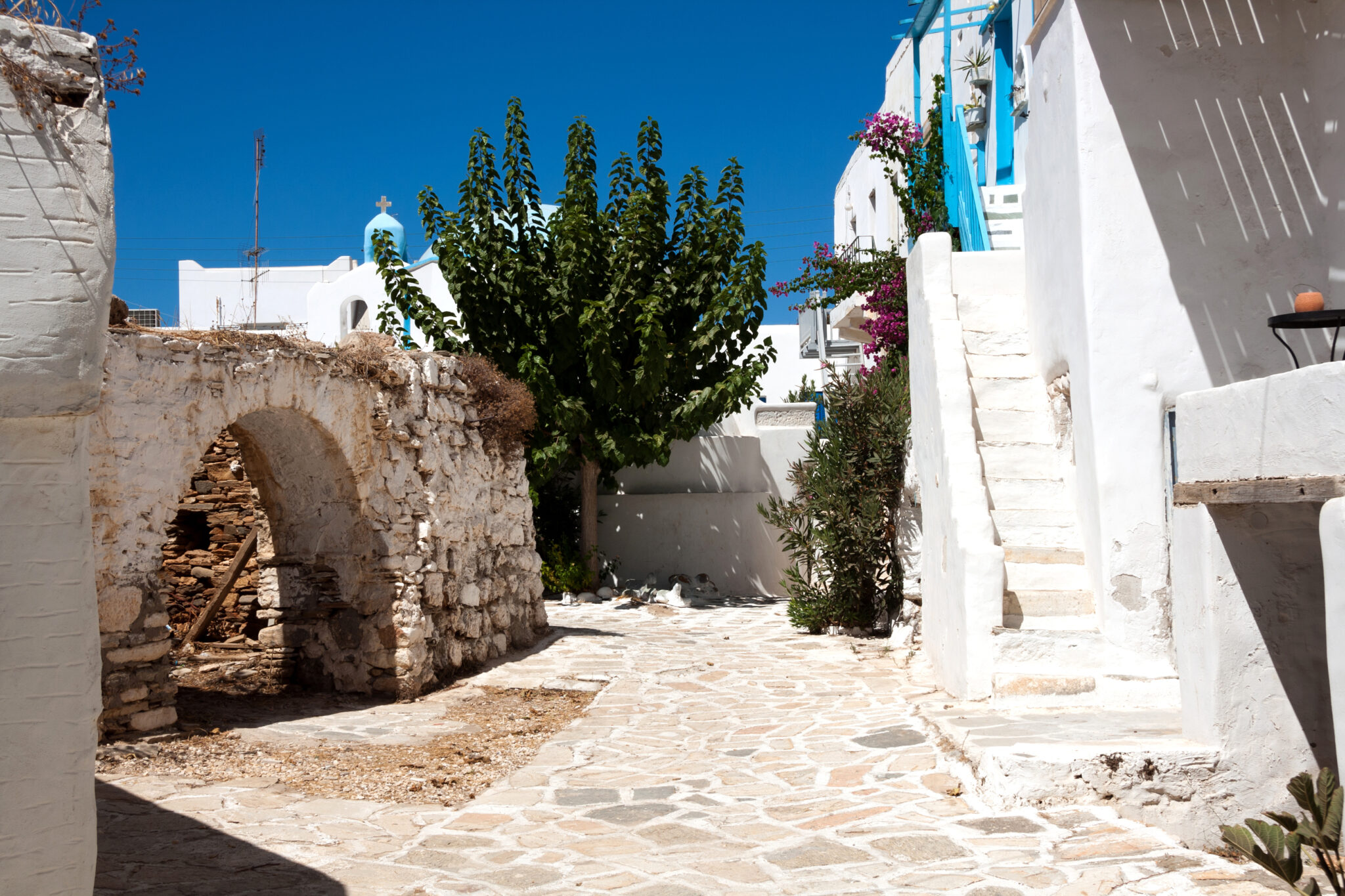According to myth, Poseidon threw down his trident striking a piece of land into three pieces. The largest of the three, Naxos, he gave to his wife Amphitrite, the second he adorned with a beautiful coastline, Paros, and the third he filled with verdant fields, Antiparos.
More prosaically, a causeway once crossed the narrow strait between Paros and Antiparos but the island was severed from its larger sibling as a result of an earthquake around 550 BC. On one of the islets in the channel, Saliagos, buildings and objects dating back to 5000 BC have been found, the oldest remains of civilisation in the Cyclades.
The main town of Antiparos is also called Antiparos with a pedestrianised main street and a busy port area, full of bars and restaurants and a main square a block or two in. To the right of the square are houses and the wall of the 15th century Kastro, while at the other end of quay from the ferry dock a path leads to a beautiful sandy beach where you can wade across to Diplo, an islet home to sheep and goats.
Despotiko
A stone’s throw from Agios Georgios on the southwest coast is the islet of Despotiko. Geographically, it, rather than Delos, is actually at the centre of the Cyclades and on a clear day looking clockwise it is possible to see the surrounding islands of Antiparos, Syros, Serifos, Sifnos, Kimolos, Folegandros, Sikinos and Ios. Presently uninhabited, in ancient times it played a strategic role as a safe anchorage and there are the remains of an important late Archaic sanctuary to Apollo, a Doric temple with an ornate facade. Under the name Prepesinthus the island is noted by Strabo and Pliny the Elder.
Blessed with a beautiful coastline, the island is visited by boats that run from Agios Georgios and from Paros, and most stop at the lovely Livadi beach. Neighbouring islet Stroggylo, similarily uninhabited, has a magnificent sandy bay with beautiful clear turquoise waters, while Tsimintiri, home to a family of inquisitive goats, can be swum to from Agios Georgios.
Cave of Antiparos
In the 19th century the most famous sight in the Aegean was the Cave of Antiparos, even inspiring the story of “The Swiss Family Robinson.” The oldest known cave in Greece, it is to the southeast of Antiparos on Mt.Ai Gianni, and the oldest stalagmites and stalactites are thought to be over 45 million years old.
This wonder of the natural world was known in ancient times but was rediscovered by a French ambassador in the 16th century and myths and legends have been told about it ever since. The walls are covered in graffiti; look out for the autographs of Lord Byron and King Otto. There are exactly 411 steps down to explore the 85 metre depth. At the entrance to cave is the Church of Agios Ioannis Spiliotis, built in 1774 and the views from the top are sublime with the Aegean spreading across to Paros. There is an audiotour and the cave is serviced by bus. Cave of Antiparos. ( Tel.: 69748 70863, closed November – March, 6€)
Church of Profitis Ilias
On the highest peak of the island at an altitude of 308 metres. Built in 1937, the materials to construct the church were transferred to the summit by Ioannis Patelis, a local miner, and his donkey. A 4 kilometre hike from Agios Georgios, the panoramic views from the church over the blue Aegean and to the neighbouring islands is worth the walk.
Venetian Castle
Walking from the port into the pedestrianised alleyways of Antiparos town lined with whitewashed houses, shops and restaurants, an arched gateway to the ancient centre known as Kamara leads to the Venetian Kastro, or castle, of Antiparos. Commissioned in 1440 on the orders of Italian Leonardo Loredano, it was built to house and protect a colony of farmers shipped in to repopulate the island. Seemingly a typical Cycladic defensive fortress, it is unique in not being built on a impregnable hill or hidden away inland as it is on a flat plain in full view of the sea, and on three known occasions (1537, 1675, and 1794) the Kastro fell and the inhabitants were massacred. Walk the cobbled streets of the village where Antiparians still live in homes built on top of each other in one continuous block within the stone walls where the enclosed atmosphere still remains and wonder at a life little unchanged for hundreds of years.
Historical and Folklore Museum
Close to the entrance to the kastro, the folklore collection is housed in an elegant modern building and it exhibits everyday objects and culturally significant items of the island. There are also photographs and findings from the excavations at Despotiko. The ticket to the Cave of Antiparos includes free entry to the folklore museum. Historical and Folklore Museum (Tel.: 22840 61417, 3€)
Read also:
The Best Beaches of Antiparos in the Cyclades, Greece
Forty eight hours in Antiparos



